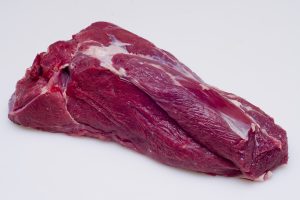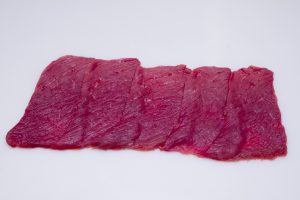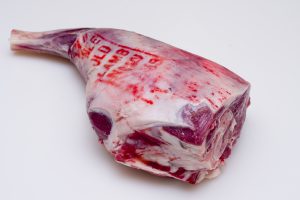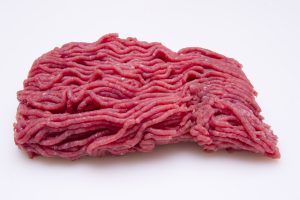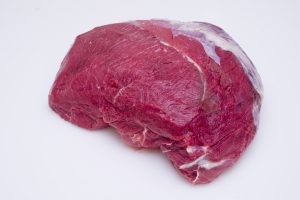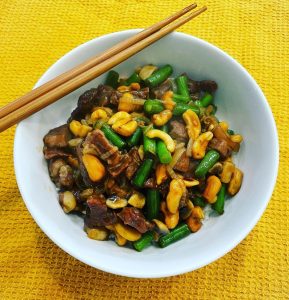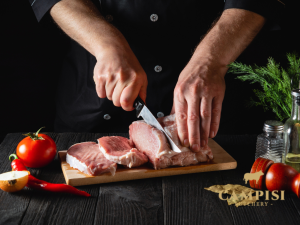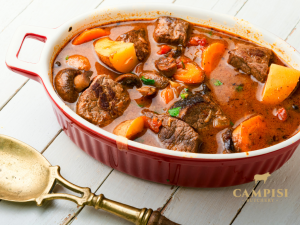Table of contents
When delving into the world of meats, a common debate surfaces among chefs, nutritionists, and even everyday consumers: grass-fed or grain-fed? Meat wholesalers often promote both types, each having its unique selling points. However, understanding the differences between them can aid in making an informed decision. Let’s dive into the nutritional differences, environmental implications, and the variation in taste and texture between these two meat categories.
Nutritional Differences
Omega-3 Fatty Acids: Grass-fed meat is generally higher in omega-3 fatty acids compared to grain-fed varieties. These fatty acids are essential for the human body and have been associated with various health benefits.
Vitamins: Grass-fed meats, particularly cuts like the Leg of Lamb Roast or Cuts of Beef, tend to have higher levels of Vitamin A and E, as well as antioxidants.
Healthy Fats: Meat from animals that have grazed on grass contains higher levels of conjugated linoleic acid (CLA), a beneficial fat known for its health-boosting properties.
Environmental Implications
Land Use: Grain-fed meat production often requires large tracts of land to grow grain, whereas grass-fed animals graze on natural pastures, which can be more sustainable in certain regions.
Carbon Footprint: Grass-fed systems, particularly when practiced in a rotational grazing system, can help sequester carbon, making it potentially more environmentally friendly. However, grain-fed systems can sometimes produce meat more rapidly, leading to differing environmental impacts.
Biodiversity: Grasslands used for grazing can support a myriad of wildlife species, promoting biodiversity. In contrast, large-scale grain farms may not offer the same ecological diversity.
Taste and Texture Comparison
Flavor Profile: Grass-fed meats, whether it’s a juicy Pot roast veal or a gourmet Leg of Lamb, often have a distinct, earthy flavor, reflecting the animal’s diet. Grain-fed meat, on the other hand, might have a milder, more neutral taste.
Texture: Grass-fed meats can be leaner and might have a firmer texture compared to the often more marbled grain-fed meat. This difference can be especially noticeable in popular cuts of meat.
Cooking Techniques: Due to the leaner profile of grass-fed meats, they might require different cooking methods. For instance, a venison steak from a grass-fed deer might need a quicker sear to retain its juiciness.
Gourmet Experience: Many high-end restaurants offer a Salumi plate featuring both grass-fed and grain-fed cured meats, such as coppa. The discerning palate can explore and appreciate the diverse flavors from both feeding practices.
Exploring the World of Meat: Varieties, Importance, and Unique Traits
When discussing the culinary landscape, meat often takes center stage in many cultures. Its versatility in dishes, nutritional value, and rich history makes it a staple for countless individuals. Below, we address some frequently asked questions about meat to offer deeper insights.
What are the 4 types of meat?
There are several ways to categorize meat, but when considering the primary sources, we can narrow them down to four main types:
- Red Meat: This includes meats like beef, pork, and lamb. These meats come from mammals and are usually red when raw.
- Poultry: This category comprises birds such as chicken, turkey, duck, and quail.
- Fish: Often distinguished from other meats, fish encompasses both freshwater and saltwater species.
- Game: These are wild animals hunted for food, which can include venison (deer), rabbit, or even certain types of birds.
Why is meat important for?
Meat has been an essential part of the human diet for millennia. Here’s why it holds significance:
Nutritional Value: Meat is packed with vital nutrients such as proteins, vitamins (like B12), minerals (like iron and zinc), and essential fatty acids. These nutrients are crucial for muscle growth, energy, and overall health.
Cultural Significance: Many cultures have specific dishes and traditions centered around meat, making it integral to their culinary identity.
Economic Value: The meat industry creates jobs, supports livelihoods, and contributes significantly to economies worldwide.
What is a fact about meat?
A fascinating fact about meat is that it has been part of the human diet for about 2.6 million years. Early humans evolved as omnivores, and incorporating meat into their diet allowed them to develop larger brains.
What are the characteristics of meat?
When evaluating meat, several distinct characteristics come to the forefront:
Texture: The feel of meat can range from tender to tough, influenced by the animal’s age, diet, and the specific cut of meat.
Color: Fresh meat often has a vibrant color – beef being reddish, chicken having a pinkish hue, and fish displaying a clear, translucent appearance.
Flavor: This can be influenced by the animal’s diet, the way the meat is cooked, and its fat content. For instance, grass-fed beef might have a more earthy flavor compared to grain-fed varieties.
Marbling: Refers to the white flecks of fat within the muscle tissue. High marbling often indicates a juicy and flavorful cut.
Both grass-fed and grain-fed meats have their merits. For those seeking quality meats, it’s essential to consider personal preferences, health goals, and environmental beliefs. Grass-fed meat, with its distinct taste and potential health benefits, offers a unique culinary experience. At the same time, grain-fed meat is beloved by many for its consistent flavor and tenderness. Next time you’re at the butcher or ordering from meat wholesalers, consider trying a cut you haven’t before – perhaps a Gourmet Meats option or a traditional Pot roast veal – and savor the differences for yourself.

